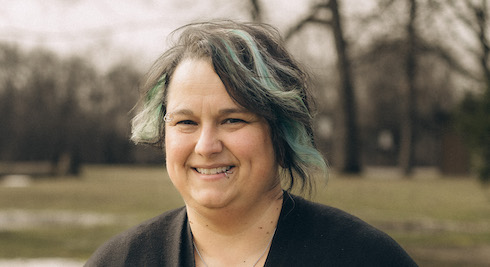
The construction site-style portable toilet in the parking lot of Hope Center (Billings Southside Foursquare Church) in Billings, Mont., isn’t pretty, but it’s very practical. It meets a simple, basic need of those living on the streets around the church in the lower-income area of the city. And it’s something of a symbol of how pastor Stan Simmons’ view of ministry has changed in the past few years, “from arms’ length to hands-on.”
In building Faith Chapel (Billings Foursquare Church) across town into a widely respected megachurch over more than three decades, Stan focused on order and excellence. While still valuing both, since retiring he has taken over the leadership of Hope Center—a Faith Chapel church plant—where he has rediscovered how, in a small congregation serving many struggling with life-controlling issues, church can be unavoidably messy. That lesson is captured in a large sign in the church’s lobby: No perfect people allowed.
“When you are in ministry like this, you tend to do away with your easy answers, and you have to accept people where they are,” Stan observes. “Sometimes there is nothing more you can do than keep them alive. You can’t have huge expectations about dramatic changes taking place in their life because that doesn’t happen a lot.”
But he and his church members look for and celebrate baby steps, such as those currently homeless who come into the church foyer for the food and clothing banks, or the free coffee and cookies, and over time venture into a service.
“The Lord took me by surprise and gave me a second chance for hands-on loving people.”
One of those baptized at Easter was a woman who had cursed Stan out the first time he met her because she couldn’t get into the church to use its bathroom. She had wet herself as a result, prompting Stan to install the portable toilet across the street. It may not look attractive to most people, but it’s a welcome sight to some.
The church has also added overhead heaters above the benches outside its doors, so those without shelter can warm themselves during the harsh winters. Stan carries a few $5 bills to give to people in need, knowing some might take advantage. “God can more than make up for that,” he says. “I would rather err on the side of generosity.”
As much as possible, Stan looks for ways the disadvantaged can serve in church, rather than merely remain as recipients of ministry; one is a greeter, while another is Stan’s unofficial bodyguard, and a third his assistant. As its welcome sign affirms, Hope isn’t perfect, “but nobody ever complains,” says Stan. “They have no sense of entitlement.”
By virtue of its location, Hope is confronted with the reality of poverty in a way many suburban churches are not, he recognizes. But “Jesus talked so much about the poor,” he says, noting how the Bible equates helping the poor with lending to the Lord. “That’s a pretty good loan, in my mind.”
Through his time at Hope, freed up from the policies and protocols of a well-run large church, Stan says, “the Lord has taken me by surprise, and given me a second chance for hands-on loving people. My formula these days is that anything minus love equals nothing.”

